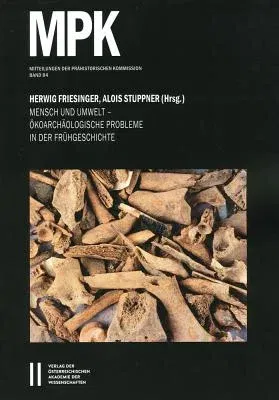English summary: Archaeological science is starting to focus on the
relationship between humans and their environment. At the 17th
international symposium "Grundprobleme der fruhgeschichtlichen
Entwicklung im mittleren Donauraum" archaeologists, archaeobotanists and
zooarchaeologists addressed questions concerning climate and environment
in Early History. The contributions in this proceedings volume highlight
the importance of a close interdisciplinary cooperation between the
disciplines of archaeology, prehistory and early history,
dendrochronology, palaeoecology, archaeobotany, zooarchaeology and
quaternary malacology. The first part of the volume deals with new
methods and strategies used by related scientific disciplines for the
reconstruction of historical climates and environments. The second part
focuses on agriculture from the Early Iron Age to the Early Middle Ages.
The archaeological examinations found in this section are largely based
on agricultural tools which are one of the most important archaeological
sources as they reflect all technological changes and innovations
concerning food acquisition and agriculture. The archaeobotanical and
zooarchaeological analyses in this part of the volume provide data
concerning cultivated plants as well as the spectrum of domesticated and
wild animals. The third part of the proceedings focuses on written
sources from Classical Antiquity and the Early and High Middle Ages.
While the texts dating back to Classical Antiquity form the basis for a
better understanding of economy and politics in Gaul and the Roman
Empire, Early and High Middle Age texts are a rich source for the
research into the conditions and material culture of the Middle Ages.
German description: Die wechselseitigen Beziehungen zwischen Mensch und
Umwelt rucken immer mehr ins Zentrum der archaologischen Forschung.
Archaologen, Archaobotaniker und zoologen sowie Historiker bezogen beim
17. Internationalen Symposium "Grundprobleme der fruhgeschichtlichen
Entwicklung im mittleren Donauraum" Stellung zu klima und
umweltgeschichtlichen Fragen in der Fruhgeschichte. Die in diesem
Tagungsband vorgelegten Beitrage unterstreichen die Notwendigkeit einer
engen interdisziplinaren Zusammenarbeit von Archaologie, Ur und
Fruhgeschichte, Dendrochronologie, Palaookologie, Archaobotanik und
zoologie sowie Quartarmalakologie. Der erste Teil des Tagungsbandes
prasentiert vor allem die in Nachbardisziplinen neu entwickelten
Forschungsrichtungen und Strategien fur die Rekonstruktion ehemaliger
Klima und Umweltverhaltnisse. Die Beitrage des zweiten Teils befassen
sich mit der Rekonstruktion der Landwirtschaft von der jungeren
Eisenzeit bis zum Fruhmittelalter. Eine vorrangige archaologische Quelle
sind dabei die landwirtschaftlichen Gerate, da sie die technischen
Veranderungen und Innovationen in der Nahrungsmittelbeschaffung und in
der Landwirtschaft aufzeigen. Archaobotanische und zoologische Analysen
liefern Angaben zu den angebauten Kulturpflanzen und Haustier- und
Wildtierspektren. Im Mittelpunkt des dritten Teils steht die Rolle der
antiken bzw. fruh und hochmittelalterlichen Textquellen. Wahrend antike
Texte fur Erkenntnisse zu Wirtschaft und Politik in Gallien und im
Romischen Reich grundlegend sind, bilden fruh und hochmittelalterliche
Texte eine Fundgrube fur die mittelalterliche Realienkunde.

